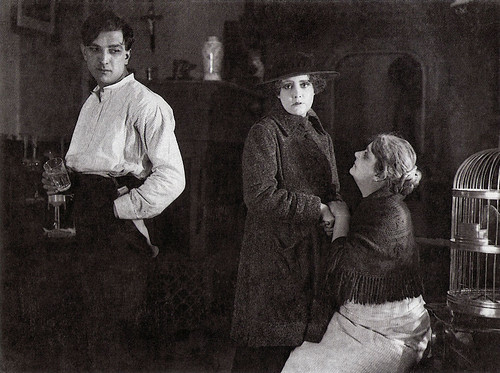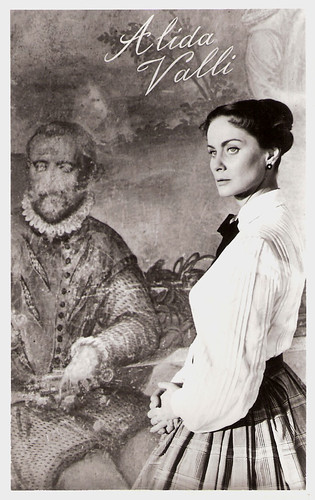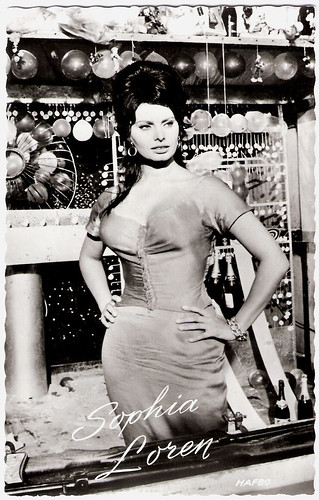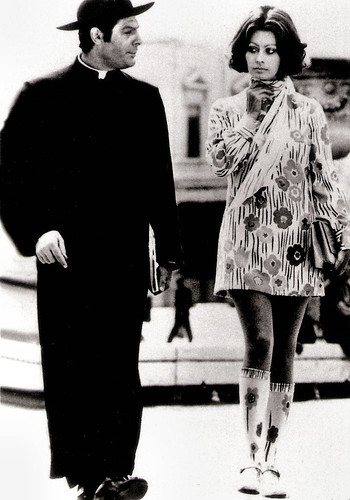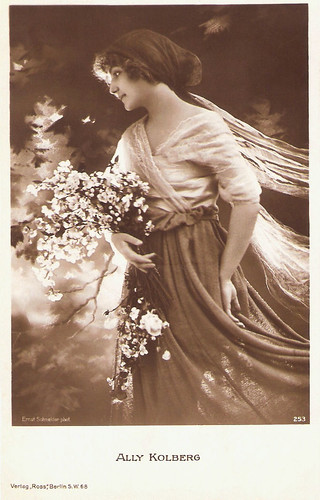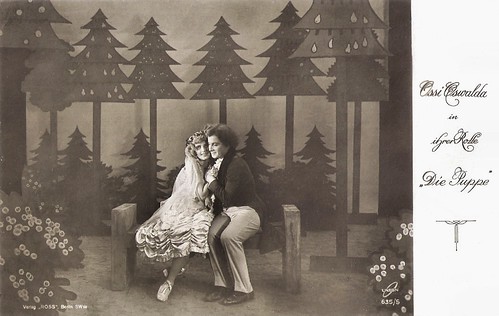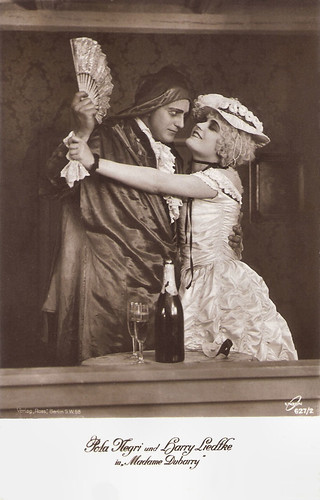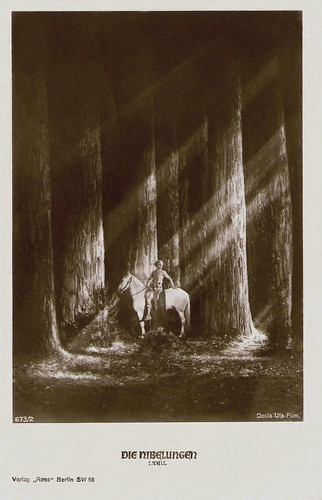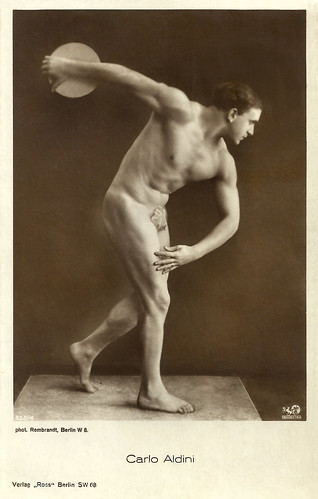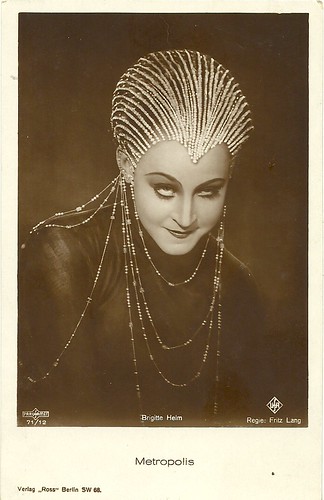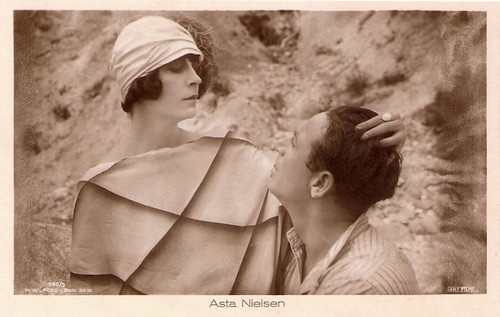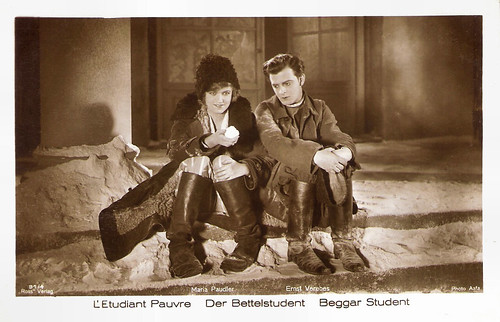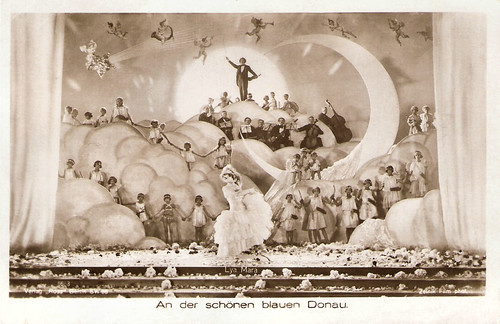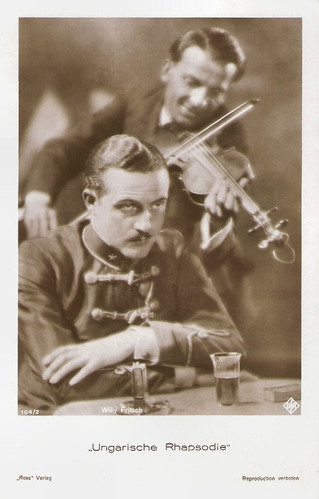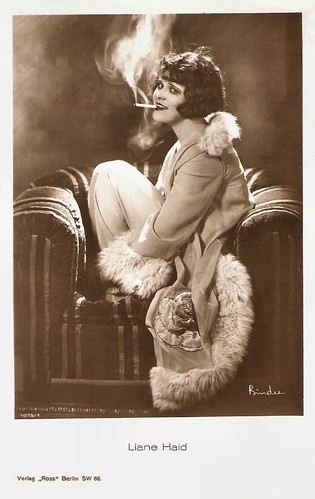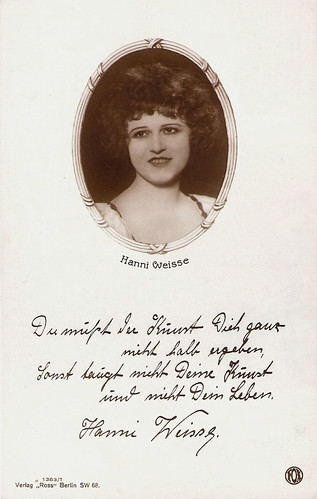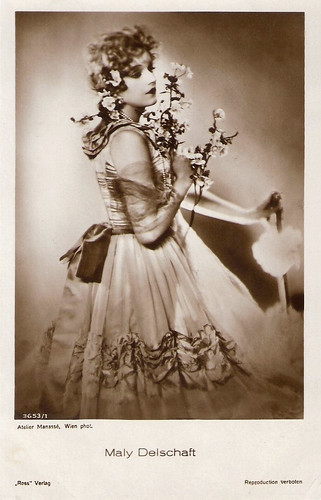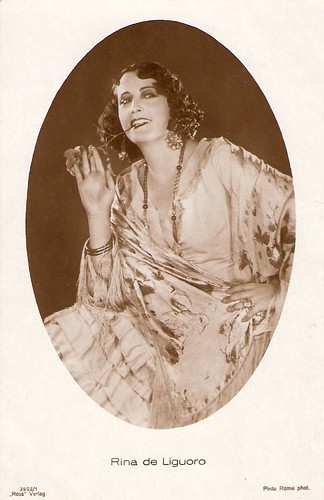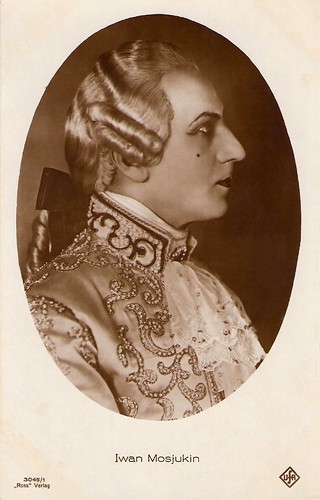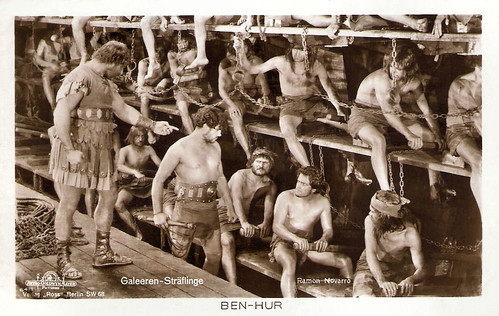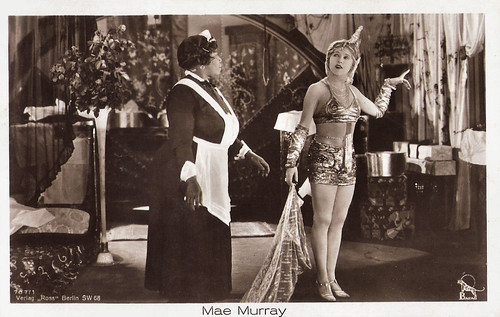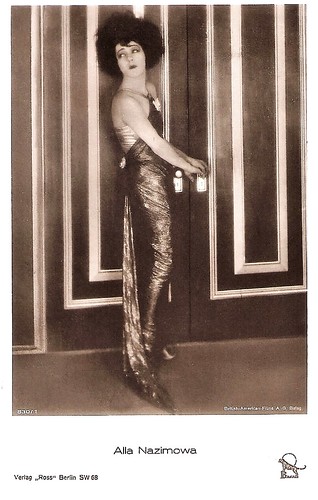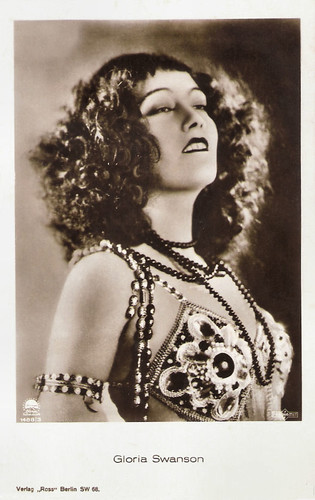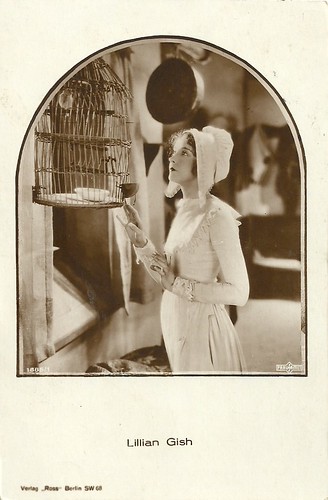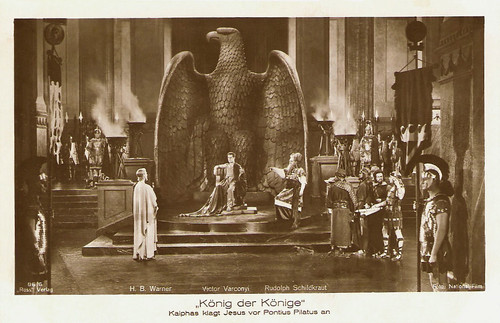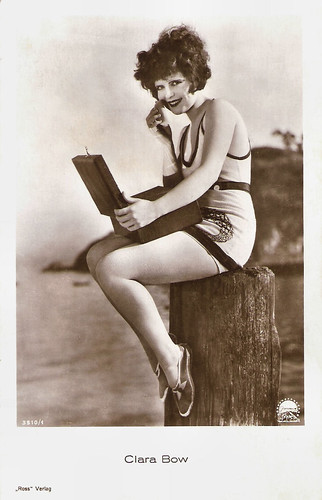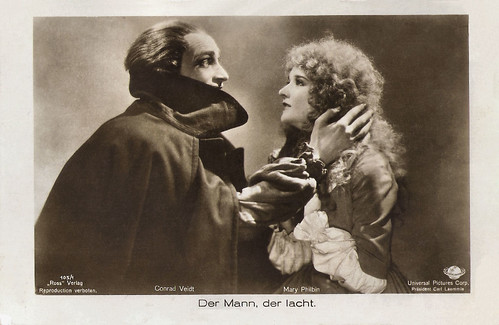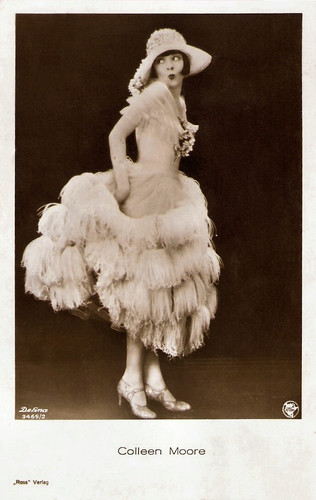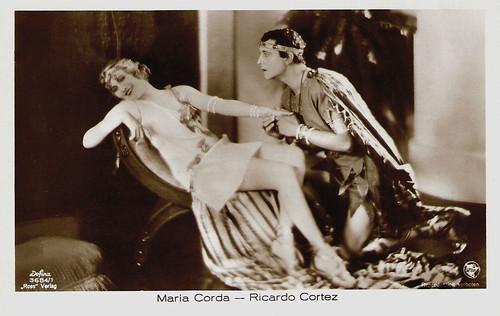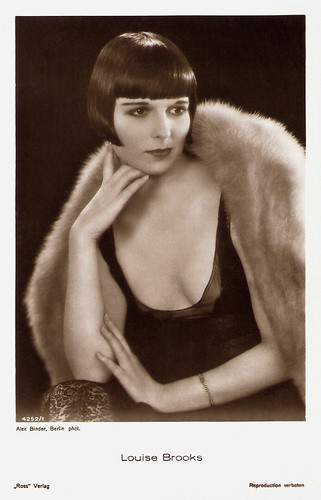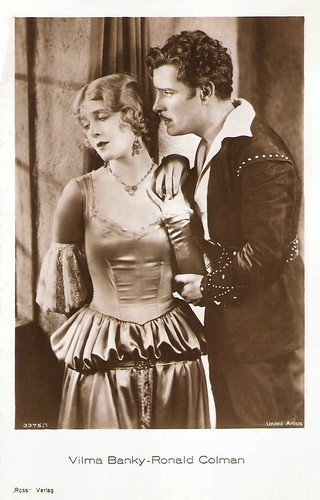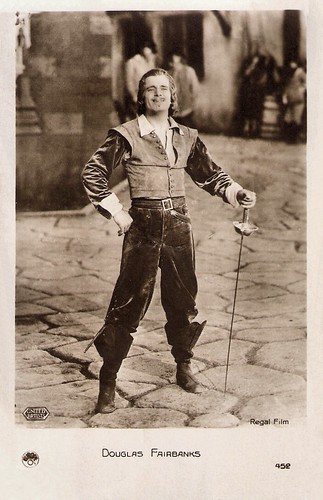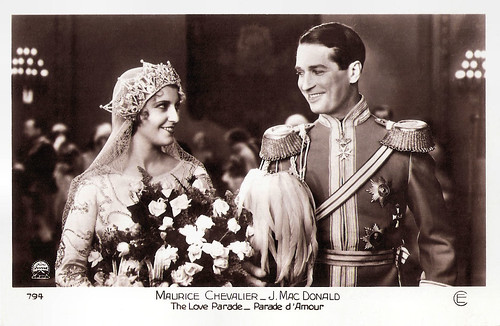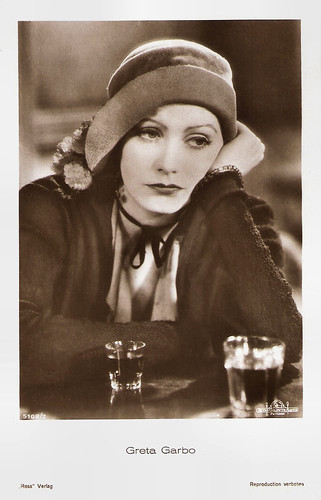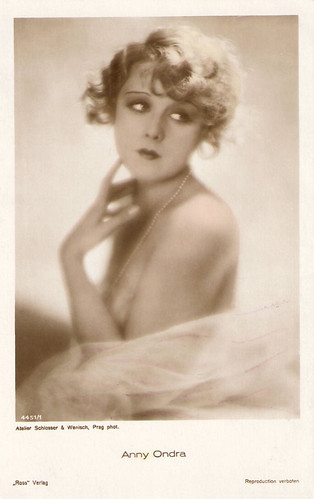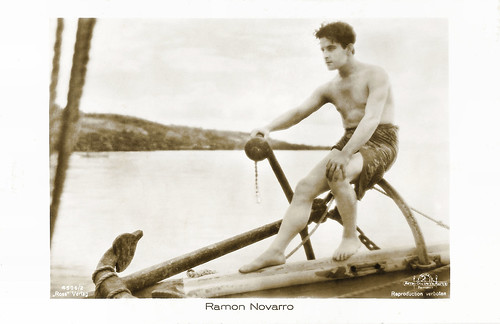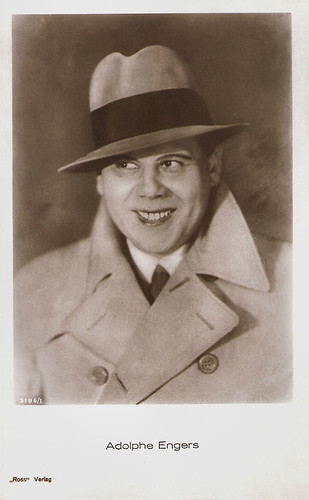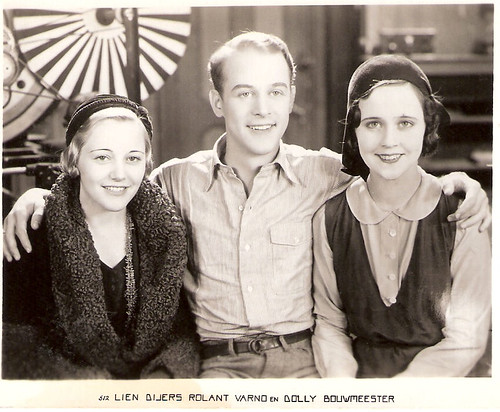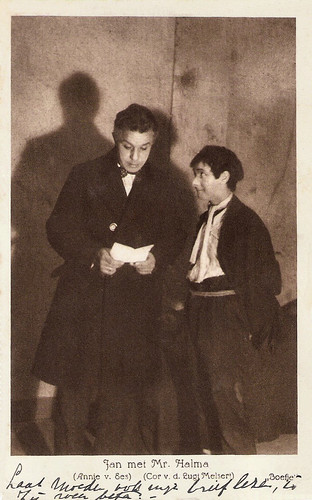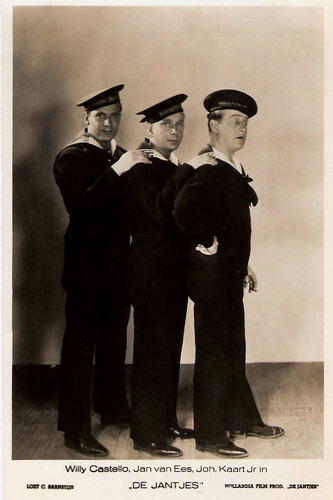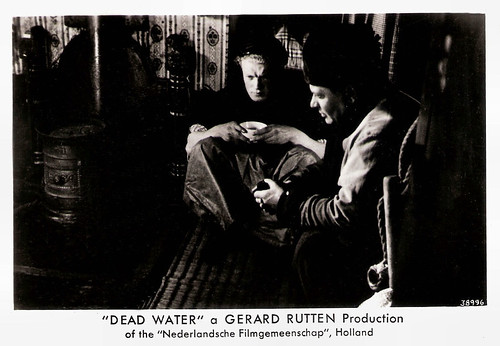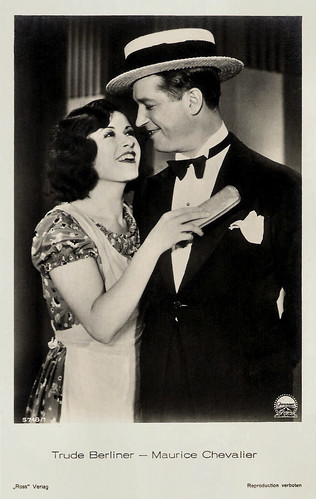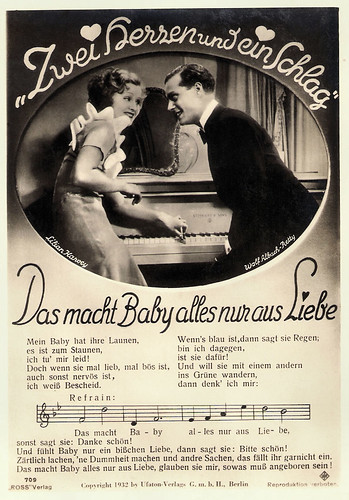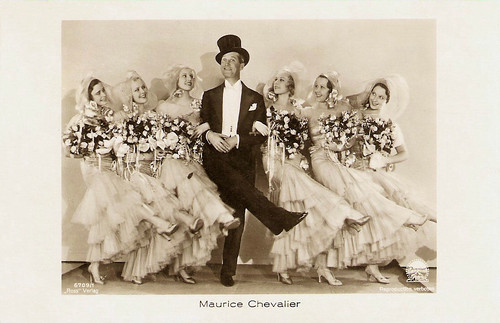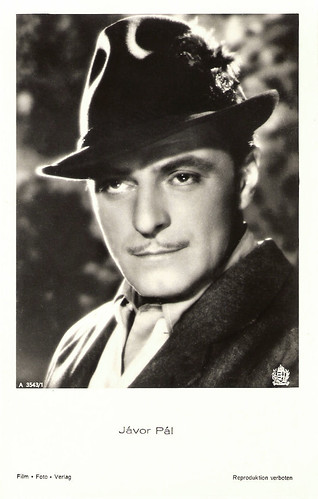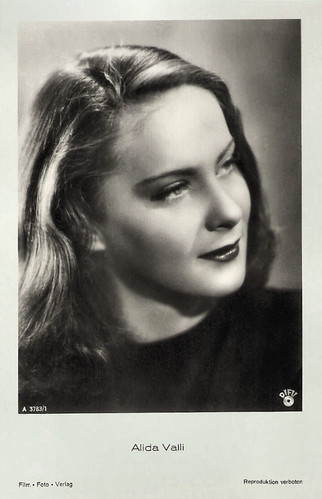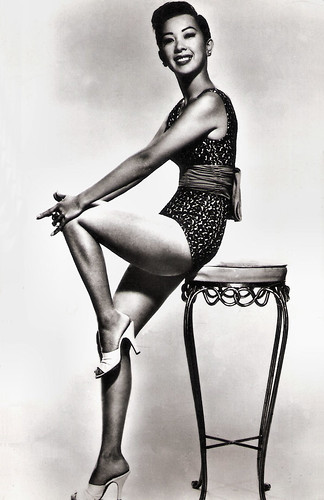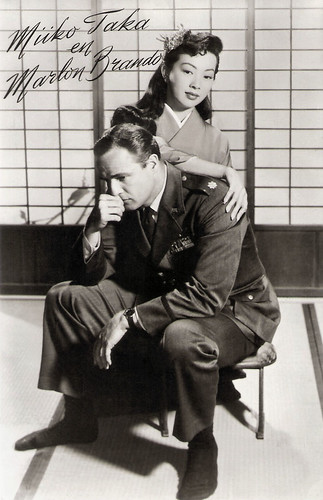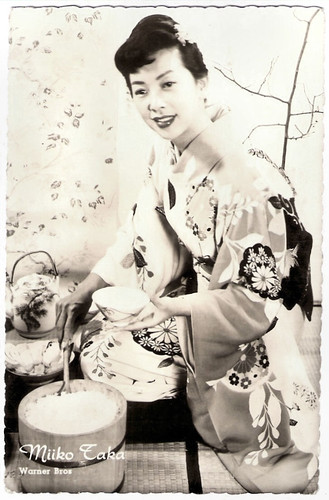Rainer Werner Fassbinder (1945-1982) was a German film director, screenwriter, film producer and actor. Fassbinder was part of the New German Cinema movement. Starting at age 21, Fassbinder made over forty films and TV dramas in fifteen years, along with directing numerous plays for the theatre. He also acted in nineteen of his own films as well as for other directors. Fassbinder died in 1982 at the age of 37 from a lethal cocktail of cocaine and barbiturates.![Rainer Werner Fassbinder in Liebe ist kälter als der Tod (1969)]()
German postcard by Hias Schasko Postkarten, München. Photo: Filmverlag der Autoren. Publicity still for
Liebe ist kälter als der Tod/Love Is Colder Than Death (Rainer Werner Fassbinder, 1969).
The Little Chaos
Rainer Werner Fassbinder was born in Bavaria in the small town of Bad Wörishofen in 1945. The aftermath of World War II deeply marked his childhood and the lives of his bourgeois family. He was the only child of
Liselotte Pempeit, a translator and
Helmut Fassbinder, a doctor who worked out of the couple's apartment in Sendlinger Strasse, near Munich's red light district. In 1951, his parents divorced. Helmut moved to Cologne while Liselotte raised her son as a single parent in Munich.
In order to support herself and her child, Pempeit took in boarders and found employment as a German to English translator. When she was working, she often sent her son to the cinema in order to concentrate. Later in life, Fassbinder claimed that he saw a film nearly every day and sometimes as many as three or four. As he was often left alone, he became independent and uncontrollable. He clashed with his mother's younger lover Siggi, who lived with them when Fassbinder was around eight or nine years old. He had a similar difficult relationship with the much older journalist Wolff Eder, who became his stepfather in 1959.
Early in his adolescence, Fassbinder identified as homosexual. As a teen, Fassbinder was sent to boarding school. His time there was marred by his repeated escape attempts and he eventually left school before any final examinations. At the age of 15, he moved to Cologne and stayed with his father for a couple of years while attending night school. To earn money, he worked small jobs and helped his father who rented shabby apartments to immigrant workers. Around this time, Fassbinder began writing short plays and stories and poems.
In 1963, aged eighteen, Fassbinder returned to Munich with plans to attend night school with the idea to eventually study theatrical science. Following his mother's advice, he took acting lessons and from 1964 to 1966 attended the Fridl-Leonhard Studio for actors in Munich. There, he met
Hanna Schygulla, who would become one of his most important actors. During this time, he made his first 8mm films and took on small acting roles, assistant director, and sound man. In this period, he also wrote the tragic-comic play
Tropfen auf heiße Steine (Drops on Hot Stones).
To gain entry to the Berlin Film School, Fassbinder submitted a film version of his play
Parallels. He also entered several 8 mm films including
This Night (now considered lost) but he was turned down for admission, as were the later film directors
Werner Schroeter and
Rosa von Praunheim. He returned to Munich where he continued with his writing. He also made two short films,
Der Stadtstreicher/The City Tramp (1965) and
Das Kleine Chaos/The Little Chaos (1966). Shot in black and white, they were financed by Fassbinder's lover,
Christoph Roser, an aspiring actor, in exchange for leading roles. Fassbinder acted in both of these films which also featured
Irm Hermann. In the latter, his mother – under the name of
Lilo Pempeit– played the first of many parts in her son's films.
![Rainer Werner Fassbinder, shooting Händler der vier Jahreszeiten (1971)]()
German postcard by Verlag Hias Schaschko, München (Munich), no. 209. Photo: Fassbinder during the shooting of
Händler der vier Jahreszeiten/The Merchant of Four Seasons (1971), then still called
Der Obsthändler/The Grocer.
Love is Colder than Death
In 1967 Rainer Werner Fassbinder joined the Munich Action-Theater, where he was active as an actor, director and script writer. After two months he became the company's leader. In April 1968 Fassbinder directed the premiere production of his play
Katzelmacher, the story of a foreign worker from Greece who becomes the object of intense racial, sexual, and political hatred among a group of Bavarian slackers.
A few weeks later, in May 1968, the Action-Theater was disbanded after its theatre was wrecked by one of its founders, jealous of Fassbinder's growing power within the group. It promptly reformed as the Anti-Theater under Fassbinder's direction. The troupe lived and performed together. This close-knit group of young actors included among them Fassbinder,
Peer Raben,
Harry Baer and
Kurt Raab, who along with
Hanna Schygulla and
Irm Hermann became the most important members of his cinematic stock company.
Working with the Anti-Theater, Fassbinder continued writing, directing and acting. In the space of eighteen months he directed twelve plays. Of these twelve plays, four were written by Fassbinder; he rewrote five others. The style of his stage directing closely resembled that of his early films, a mixture of choreographed movement and static poses, taking its cues not from the traditions of stage theatre, but from musicals, cabaret, films and the student protest movement.
Fassbinder used his theatrical work as a springboard for making films. Shot in black and white with a shoestring budget in April 1969, Fassbinder's first feature-length film,
Liebe ist kälter als der Tod/Love is Colder than Death (1969), was a deconstruction of the American gangster films of the 1930s, 1940s and 1950s. Fassbinder plays the lead role of Franz, a small-time pimp who is torn between his mistress Joanna, a prostitute (
Hanna Schygulla), and his friend Bruno, a gangster sent after Franz by the syndicate that he has refused to join.
His second film,
Katzelmacher (1969), was received more positively, garnering five prizes after its debut at Mannheim. From then on, Fassbinder centered his efforts in his career as film director, but he maintained an intermittent foothold in the theatre until his death. Fassbinder’s first ten films (1969–1971) were an extension of his work in the theatre, shot usually with a static camera and with deliberately unnaturalistic dialogue.
Wikipedia: “He was strongly influenced by Brecht's
Verfremdungseffekt (alienation effect) and the French New Wave cinema, particularly the works of
Jean-Luc Godard.”
Fassbinder developed his rapid working methods early. Because he knew his actors and technicians so well, Fassbinder was able to complete as many as four or five films per year on extremely low budgets. This allowed him to compete successfully for the government grants needed to continue making films. Unlike the other major auteurs of the New German Cinema,
Volker Schlöndorff,
Werner Herzog and
Wim Wenders, who started out making films, Fassbinder's stage background was evident throughout his work.
![Rainer Werner Fassbinder]()
German postcard by Känguruhpress im Gebr. König Postkartenverlag, Köln, no. K. 2007. Photo: Julian Gotha.
Fear Eats the Soul
In 1971, Rainer Werner Fassbinder took an eight-month break from filmmaking. During this time, Fassbinder turned for a model to Hollywood melodrama, particularly the films German émigré
Douglas Sirk (a.k.a.
Detlef Sierck) made in Hollywood for Universal-International in the 1950s:
Magnificent Obsession (1954),
All That Heaven Allows (1955) and
Imitation of Life (1959). Fassbinder was attracted to these films not only because of their entertainment value, but also for their depiction of various kinds of repression and exploitation.
Fassbinder scored his first domestic commercial success with
Händler der vier Jahreszeiten/The Merchant of Four Seasons (1971). Loneliness is a common theme in Fassbinder's work, together with the idea that power becomes a determining factor in all human relationships. His characters yearn for love, but seem condemned to exert an often violent control over those around them. A good example is also
Die bitteren Tränen der Petra von Kant/The Bitter Tears of Petra von Kant (1972), featuring
Margit Carstensen, which was adapted by Fassbinder from his plays.
Wildwechsel/Jailbait (1973), starring
Harry Baer and
Eva Mattes, is a bleak story of teenage angst, set in industrial northern Germany during the 1950s. Like in many other of his films, Fassbinder analyses lower middle class life with characters who, unable to articulate their feelings, bury them in inane phrases and violent acts.
Fassbinder first gained international success with
Angst essen Seele auf/Fear Eats the Soul (1974). which won the International Critics Prize at Cannes and was acclaimed by critics everywhere as one of 1974's best films.
Fear Eats the Soul was loosely inspired by Sirk's
All That Heaven Allows (1955). It details the vicious response of family and community to a lonely ageing white cleaning lady (
Brigitte Mira) who marries a muscular, much younger black Moroccan immigrant worker (
El Hedi ben Salem).
In these films, Fassbinder explored how deep-rooted prejudices about race, sex, sexual orientation, politics and class are inherent in society, while also tackling his trademark subject of the everyday fascism of family life and friendship. He learned how to handle all phases of production, from writing and acting to direction and theatre management. This versatility surfaced in his films where he served as composer, production designer, cinematographer, producer and editor.
![Rainer Werner Fassbinder]()
German postcard by Verlag Hias Schaschko, München (Munich), no. 211. Photo: Patrick la Banca, ca. 1980.
In a Year of Thirteen Moons
Rainer Werner Fassbinder’s final films, from around 1977 until his death, were more varied, sometimes with international actors and the stock company disbanded, although the casts of some films were still filled with Fassbinder regulars.
Despair (1978) is based upon the 1936 novel of the same name by
Vladimir Nabokov, adapted by
Tom Stoppard and featuring
Dirk Bogarde. It was made on a budget of 6,000,000 DEM, exceeding the total cost of Fassbinder's first fifteen films.
In einem Jahr mit 13 Monden/In a Year of Thirteen Moons (1978) is Fassbinder most personal and bleakest work. The film follows the tragic life of Elvira (
Volker Spengler), a transsexual formerly known as Erwin. In the last few days before her suicide, she decides to visit some of the important people and places in her life.
Fassbinder became increasingly more idiosyncratic in terms of plot, form and subject matter in films like his greatest success
Die Ehe der Maria Braun/The Marriage of Maria Braun (1979),
Die Dritte Generation/The Third Generation (1979) and
Querelle (1982). Returning to his explorations of German history, Fassbinder finally realised his dream of adapting
Alfred Döblin's 1929 novel
Berlin Alexanderplatz (1980), starring
Günter Lamprecht. A television series running more than 13 hours, it was the culmination of the director's inter-related themes of love, life, and power.
Fassbinder took on the Nazi period with
Lili Marleen (1981), an international co production, shot in English and with a large budget. The script was vaguely based on the autobiography of World War II singer
Lale Andersen,
The Sky Has Many Colors.
Hanna Schygulla stars as singer 'Willie'.
He articulated his themes in the bourgeois milieu with his trilogy about women in post-fascist Germany:
Die Ehe der Maria Braun/The Marriage of Maria Braun (1979) with
Hanna Schygulla,
Lola (1981), featuring
Barbara Sukowa, and
Die Sehnsucht der Veronika Voss/Veronika Voss (1982) with
Rosel Zech, for which he won the Golden Bear at the 32nd Berlin International Film Festival.
Fassbinder did not live to see the premiere of his last film,
Querelle (1982), based on
Jean Genet's novel
Querelle de Brest. The plot follows the title character, a handsome sailor (
Brad Davis) who is a thief and hustler. Frustrated in a homoerotic relationship with his own brother,
Querelle betrays those who love him and pays them even with murder.
![Rainer Werner Fassbinder]()
German postcard by Schwules Museum, Berlin, for the exhibition
Fabrik der Gefühle. Hommage an Rainer Werner Fassbinder, 2002. Photo: Maximilian Johannsmann / Rainer Werner Fassbinder Foundation.
Querelle
Rainer Werner Fassbinder had sexual relationships with both men and women. He rarely kept his professional and personal life separate and was known to cast family, friends and lovers in his films. Early in his career, he had a lasting, but fractured relationship with
Irm Hermann, a former secretary whom he forced to become an actress. Fassbinder usually cast her in unglamorous roles, most notably as the unfaithful wife in
The Merchant of Four Seasons and the silent abused assistant in
The Bitter Tears of Petra von Kant.
In 1969, while portraying the lead role in the TV film
Baal under the direction of
Volker Schlöndorff, Fassbinder met
Günther Kaufmann, a black Bavarian actor who had a minor role in the film. Despite the fact that Kaufmann was married and had two children, Fassbinder fell madly in love with him. The two began a turbulent affair which ultimately affected the production of
Baal. Fassbinder tried to buy Kaufmann's love by casting him in major roles in his films and buying him expensive gifts. The relationship came to an end when Kaufmann became romantically involved with composer
Peer Raben. After the end of their relationship, Fassbinder continued to cast Kaufmann in his films, albeit in minor roles. Kaufmann appeared in fourteen of Fassbinder's films, with the lead role in
Whity (1971).
Although he claimed to be opposed to matrimony as an institution, in 1970 Fassbinder married
Ingrid Caven, an actress who regularly appeared in his films. Their wedding reception was recycled in the film he was making at that time,
The American Soldier. Their relationship of mutual admiration survived the complete failure of their two-year marriage.
In 1971, Fassbinder began a relationship with
El Hedi ben Salem, a Moroccan Berber who had left his wife and five children the previous year, after meeting him at a gay bathhouse in Paris. Over the next three years, Salem appeared in several Fassbinder productions. His best known role was Ali in
Angst essen Seele Auf/Fear Eats the Soul (1974). Their three-year relationship was punctuated with jealousy, violence and heavy drug and alcohol use. Fassbinder finally ended the relationship in 1974 due to Salem's chronic alcoholism and tendency to become violent when he drank. Shortly after the breakup, Salem went to France where he was arrested and imprisoned. He hanged himself while in custody in 1977. News of Salem's suicide was kept from Fassbinder for years. He eventually found out about his former lover's death shortly before his own death in 1982 and dedicated his last film,
Querelle, to Salem.
Fassbinder's next lover was
Armin Meier. Meier was a near illiterate former butcher who had spent his early years in an orphanage. He also appeared in several Fassbinder films in this period. After Fassbinder ended the relationship in 1978, Meier deliberately consumed four bottles of sleeping pills and alcohol in the kitchen of the apartment he and Fassbinder had previously shared. His body was found a week later.
In the last four years of his life, his companion was
Juliane Lorenz, the editor of his films during the last years of his life. On the night of 10 June 1982, Fassbinder took an overdose of cocaine and sleeping pills. When he was found, an unfinished script for a film on
Rosa Luxemburg was lying next to him. His death marked the end of New German Cinema.
Steve Cohn at
IMDb: “Above all, Rainer Werner Fassbinder was a rebel whose life and art was marked by gross contradiction. Known for his trademark leather jacket and grungy appearance, Fassbinder cruised the bar scene by night, looking for sex and drugs, yet he maintained a flawless work ethic by day. Actors and actresses recount disturbing stories of his brutality toward them, yet his pictures demonstrate his deep sensitivity to social misfits and his hatred of institutionalized violence.”
![Rainer Werner Fassbinder and Rosel Zech, winning the Golden Bear for Die Sehnsucht der Veronika Voss (1982)]()
German postcard by Verlag Hias Schaschko, München (Munich), no. 214. Photo: Mario Mach.
Rainer Werner Fassbinder and
Rosel Zech, winning the Golden Bear award for
Die Sehnsucht der Veronika Voss/Veronika Voss (1982) at the 32nd Berlin International Film Festival.
Sources:
Steve Cohn (IMDb), Wikipedia (
English and
German), and
IMDb.
![Zur Chronik von Grieshuus]()
![Zur Chronik von Grieshuus]()
![Zur Chronik von Grieshuus]()
![Zur Chronik von Grieshuus]()
![Zur Chronik von Grieshuus]()







